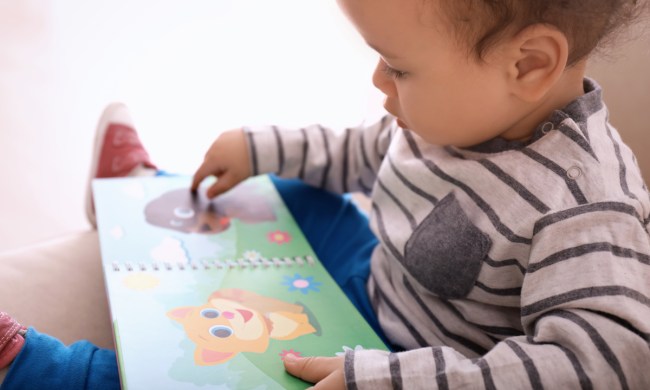The time has come. It’s going to be a bumpy ride, but you have to be strong. Of course, we are talking about how to get your toddler to sleep in her own bed. If you’ve been sleeping on the side sliver of your own, there’s no better time to take back the mattress.
While those cuddles are magical, you have to let your child sleep on her own. Not only is it healthier for her development, but you haven’t slept well in years. Heat up that third cup of coffee and see how you can keep your toddler in her own bed so you both get the rest you deserve.

What to keep in mind
It doesn’t matter if this is your first child or your fourth, you are going to have a bit of a challenge getting your toddler to sleep in his own bed. Before you start the first night of the transition to the big kid bed, there are some things to be aware of.
There will be tears
Yours or theirs. We know we want there to be minimal tears, but someone is going to be tired and cranky, and a tear will be shed. That is okay and you are not failing.
The bedroom set up is important
Let your toddler help set up the room. If this is his first room because you’ve been co-sleeping, let him pick out colors and bedding.
You don’t have to be mean, but you have to be firm
Toddlers can smell fear. They know how to wear you down. Show them love, but be firm in your decisions.
Make it clear there are reasons they can come to you
Nightmares, accidents, and getting sick are reasons your child needs to get out of bed and come find you. According to the University of Utah Health program, it’s important to let them know there are times they do need to get out of bed. Don’t scare them into never leaving their room at bedtime.

How do I get my toddler to go to bed on his own?
While we don’t have a magical spell to glue your child to his bed at night, there are things to try to make your toddler want to stay in bed.
Make your toddler’s bedroom sleepy
If you have the space, take out the loud toys and anything else that could keep your toddler awake. No bright lights or screens before bed.
Routine, routine, routine
If your toddler never knows when it’s bedtime, she will never settle down for the night. Dr. McConlogue, a Stanford Children’s Health Pediatrician says that, “having a constant routine will impact both the quality and quantity of sleep.” Make it impact in a good way with a solid routine.
If your toddler has endless bedtime demands
If you know your kiddo is going to ask for a drink, teddy, blanky, and the moon, have it all ready. Be prepared for the battle and have your supplies handy. We can’t help with the moon though.
How do I get my toddler to sleep in his own bed after co-sleeping?
This one is going to be tricky for both of you. You have both enjoyed snuggling up with each other up to this point. You will both have separation anxiety, and that is normal and okay. The best way to transition away from this setup is in steps.
Try this order
- Start with letting your child fall asleep with you next to him.
- Then have her fall asleep with you sitting on the bed.
- Then let him fall asleep with you still in the room.
- Then have her fall asleep with you either in the doorway or completely out of the room.
- Then it’s a kiss goodnight and a see ya in the morning kiddo
Yale Medicine suggests that before going on to the next step of you being further and further away, make sure you have had three consecutive days of success. Success should mean no crying. From either of you. You may have some yoyoing while you work on getting your child comfortable with the situation.

How do I stop my toddler from coming into my bed at night?
We’ve all been either startled awake by a tiny creature crawling into bed stepping on our stomachs or woken to a baby ninja pressed against our side. You’ve probably had both happen in one weekend. Here are a few tips to help keep those little feet in their bed and out of your back.
Talk it out
Treat your toddler like the little person she is. Explain that her bed is for her and your bed is for you. Answer all of her questions.
Make hisbedroom a safe place
If your child doesn’t like how dark it is, get him a nightlight. If he doesn’t like how quiet it is, get him a white noise machine. Let your child tell you what part of his room isn’t comfortable and help correct it.
Don’t make the bedroom negative
Stop sending the child to her room for punishments or negative reasons. This will make her have those feelings toward her room and not feel happy about sleeping in there. Rafael Pelayo, a sleep specialist states that “the goal is to make bedtime a positive experience.”
Naps should always be in his bed
Making sure your child takes his naps in his bed will help him transition to sleeping in there all night long.
Once you’ve had a week of your toddler staying in her bed, you can celebrate. You are doing a great job, and getting a mini you to stay in bed is a huge milestone. Trust us, if you stay strong, don’t give in, and keep the routine in place, you will be the expert in how to get a toddler to sleep in her own bed. You’ll find your child is happier when she gets a full night’s rest on her own. You’ll also remember how it feels to stretch out your legs for once.



